PERENNIALS > HELLEBORE
Chris is a gardening writer and nature enthusiast. He graduated from Oxford Brookes University in 2022 with an MA in Psychology. Chris works with the Leeds Green Action Society, helping their food cooperative by growing various fruit and vegetables on their two allotments in Hyde Park, Leeds.
Reviewed By COLIN SKELLY

Colin is a Horticulturist and Horticultural Consultant with experience in a range of practical and managerial roles across heritage, commercial and public horticulture. He holds the Royal Horticultural Society’s Master of Horticulture award and has a particular interest in horticultural ecology and naturalistic planting for habitat and climate resilience.
Hellebore plants are very popular in the UK and they can be found in countless gardens across the country.
Hellebore is the name given to a species of perennial flowering plants.
There are 15 accepted species which fall under the Hellebore umbrella – each of which with its own unique appearance and care requirements.1Helleborus. (n.d.). Kew Royal Botanic Gardens. Retrieved March 16, 2023, from https://powo.science.kew.org/taxon/urn:lsid:ipni.org:names:33158-1
Overview
| Botanical Name | Helleborus |
| Common Name(s) | Christmas Rose, Lenten Rose |
| Plant Type | Perennial Flower |
| Native Area | Europe and Asia |
| Hardiness Rating | H7 |
| Foliage | Herbaceous or semi-evergreen |
| Flowers | Bowl-shaped flowers |
| When To Sow | April, May |
| Flowering Months | January, February, March, December |
| When To Prune | January, February, March |
Sunlight
Preferred
Varies
Exposure
Sheltered
Size
Height
0.5 – 1M
Spread
0.5 – 1M
Bloom Time
December – March
Soil
Preferred
Most Soil Types
Moisture
Moist but well drained
pH
Neutral / Alkaline
The various plants that encompass the hellebore genus were first found throughout Asia and Europe.2Species and distribution – Helleborus. (n.d.). Helleborus Gold Collection. Retrieved March 16, 2023, from https://www.helleborus.de/en/plant-facts/species-and-distribution
Although hellebore plants are similar in their appearance to roses, and in fact many are referred to using that term, they are not related to the rose family at all.

Hellebore plants have five sepals, which unlike petals, do not fall and will often remain on the plant for several months.
The colour of the sepals will depend on the species; some of the colouring you’ll find on the sepals of hellebore plants include dark red, white and pink, yellow, double pink and blue-black.
Something that makes hellebore plants attractive to gardeners is their ability to cope well in all conditions, with many species being evergreen and able to withstand frost and other harsh conditions very well.
Planting
If you want to grow your own hellebore, then the good news is that they’re quite easy to grow.
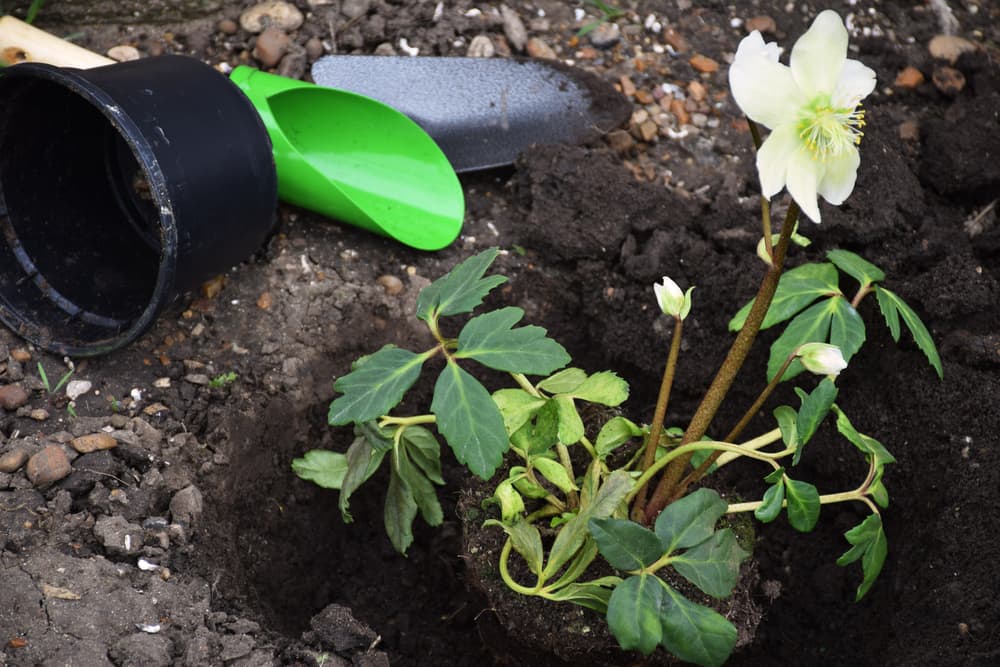
They generally last throughout the year and can withstand most weather conditions, including harsh winters.
The first thing you’ll need to decide on is which type of hellebore plant you want to grow.
Where To Plant
When choosing a position for your plants, ideally you will put them in a spot that gets at least some sunlight during the day.
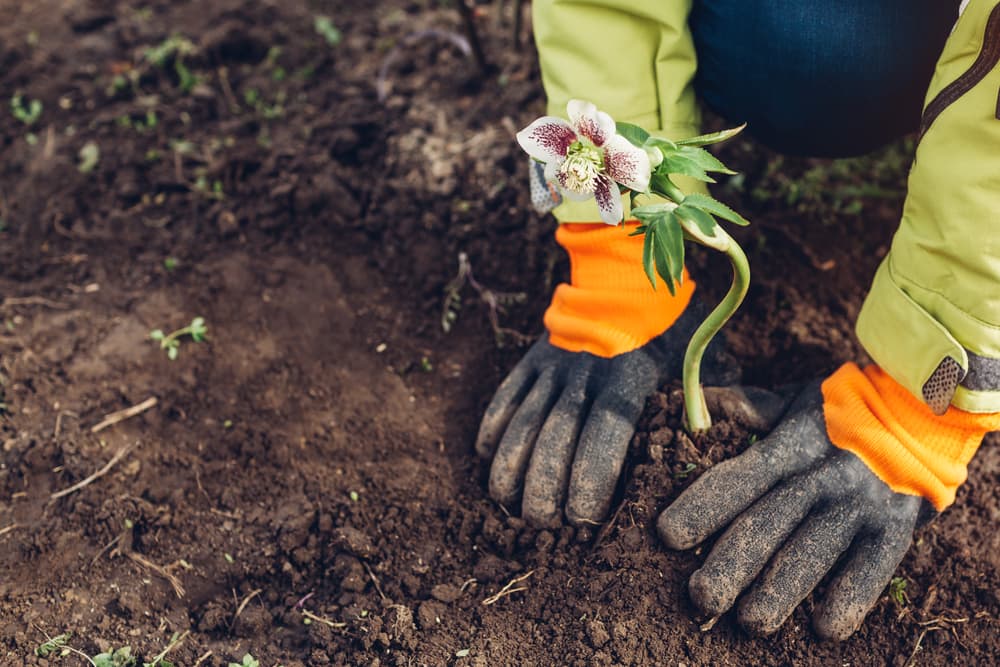
There are certain species of hellebore that will grow in the shade, such as Helleborus foetidus, but generally, you’ll want to ensure they get at least some sunlight during the day.
Choosing the right time to plant is another important factor when growing your own hellebore.
When To Plant
Generally, you’ll want to plant them in either autumn or spring.
It’s better to avoid planting them in the summer since they’re less likely to get the water they need to thrive.

You’ll also want to consider the condition of the soil where you’re planting them.
It should be moist but not waterlogged – if the soil is in poor condition or extremely dry, then you should improve it as best you can before planting your hellebore.
If you’re planting multiple hellebore plants then be sure to leave a good amount of space between them.
There should be at least 30cm between each one, so they have enough room to grow.
Hellebore Care
Feeding & Watering
Once you’ve planted your hellebore, you’ll need to make sure they’re properly watered and fed.
Any newly planted hellebore will need regular watering throughout their first season, from spring to summer.
Even plants that are well-established will need to be watered during dry spells.
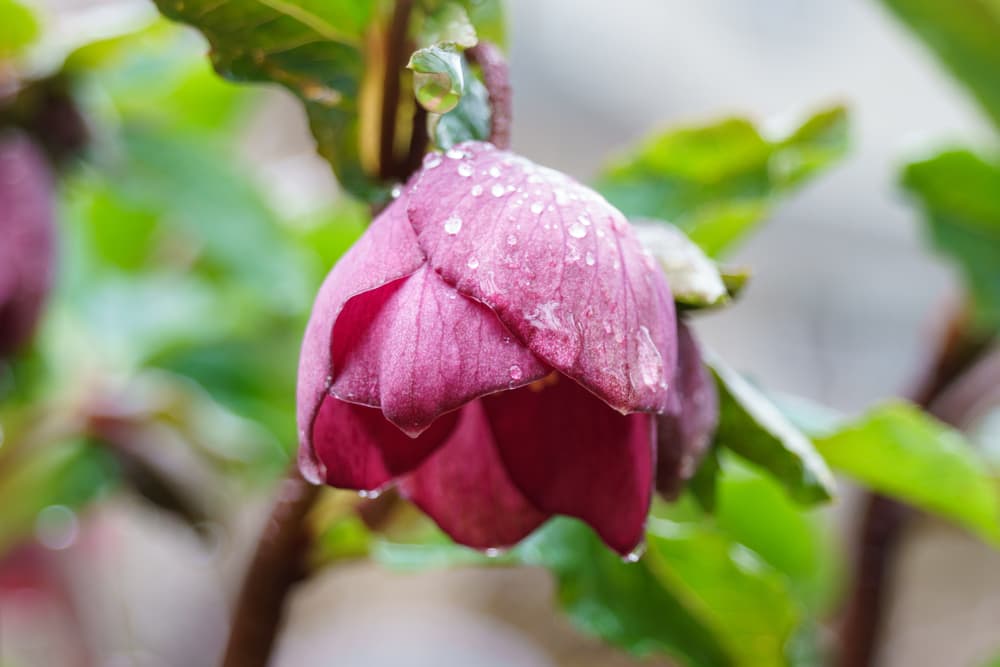
Providing you plant your hellebore in good conditions, it shouldn’t be necessary in most cases to feed them.
If you notice that they’re not growing well then you can use fertiliser, but often poor growth is due to the soil either being too dry or overly saturated so be sure to check if this is the problem first.
Propagation
There are a couple of ways to propagate hellebore plants – the first is by division.
To accomplish this, you should carefully dig the plants up, keeping the roots in-tact, and then splitting the clump so that each section has at least one shoot.
You can then plant the divisions, making sure to water them well after planting until they’re properly established.
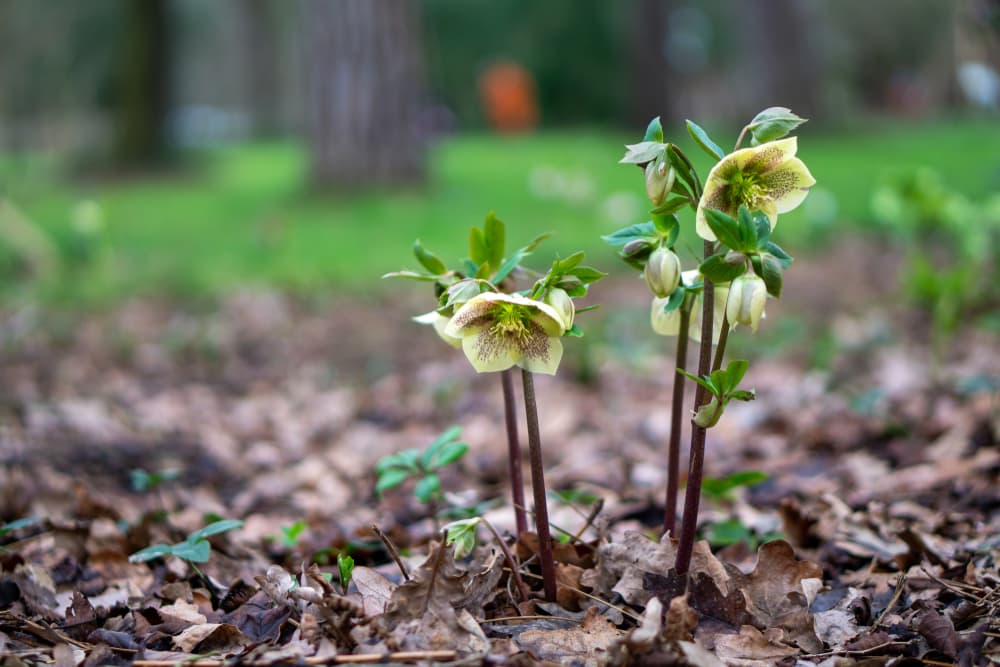
It will take a good while (up to 2 years) for plants that are propagated this way to flower properly but the results are worth it.
The other method for propagating hellebore is using seeds.
To do this you should collect the seeds from the pods once they start opening and then sow them, preferably during the summer.
Habitat & Growing Conditions
Many people mistakenly believe that hellebore in the wild grow in the woodland and in the shade exclusively, however, this is not the case.
Hellebore can thrive in a wide variety of settings, from mountains to meadows.

They are extremely hardy and can survive most weather conditions very well.
In many of the places they can be found growing in the wild, hellebore will only get partial shade and can experience weeks or sometimes even months without water.
“Although hellebores can be grown in sunny spots (except Helleborus foetidus), they tend to thrive in dappled shade as they dislike being either too wet or too dry,” explains Horticultural Consultant Colin Skelly.
During this period, they can go dormant, yet they will still flourish again once there’s been a downpour.
Growing Conditions
When grown in the garden, hellebore thrives in deep soil that’s able to retain moisture without getting waterlogged due to heavy rain in the autumn and winter.
Drainage is often an issue with hellebore and ideally, when planted in the garden, it would be in soil that’s mixed with sand to allow for better drainage.
It’s a good idea to add mulch to the soil where any hellebore is planted – an organic leaf mulch would work best.

If you want hellebore plants to flower their best, then it’s recommended that you plant them in a spot where they are fully exposed to the sun during winter and early spring.
Some shade in the summer would be best but hellebore is still able to survive, even if they are fully exposed to the sun.
If they don’t get enough water during this time, they’ll simply go dormant.
It’s important to bear in mind that overwatering can easily kill hellebore and is much worse for them than being exposed to too much sunlight.

If you’re going to feed hellebore, then it’s best to do it in late winter and use just a small amount of fertiliser.
You can cut off the leaves in the winter if you want, but it’s not necessary since they will be shed during the springtime.
It is a good idea to remove leaves if you notice any fungal spores on them, however.
Common Problems
Unfortunately, hellebore plants are prone to certain diseases, particularly if they’re not looked after properly.
Leaf Spot
One such disease is known as hellebore leaf spot.
This is a type of fungal disease that affects the leaves and the stem, leaving reddish-brown marks.

The best way to prevent the spread of leaf spot is to immediately remove any leaves that have been affected.
Another good way to prevent leaf spot is to cut off any foliage at the end of the season – this stops it from spreading throughout the winter.
Black Death
Another common disease that hellebore suffers from is known as hellebore black death and is as serious as it sounds.
There is no cure for this so if you have any plants that develop symptoms, you should dig them up immediately and destroy them.
Grey Mould
Grey mould is another common disease for hellebore plants.
It causes the tissue to decay and a fuzzy mould to grow over the parts of the plant where the fungus is present.
Hellebore plants are most prone to developing grey mould if they have an open wound or if they’re in less than optimal conditions.
Humidity does play a role in the fungus developing but it can affect hellebore plants at any time of the year, including winter.
Leaf Miner
Hellebore isn’t just prone to diseases that are naturally occurring – it can also be targeted by insects.

Phytomyza hellebore, or hellebore leaf miner as it’s also known, is a very small fly that infests certain species of hellebore plants.
Aphids
Another type of insect that attacks hellebore plants is known as hellebore aphid.
This small insect will coat hellebore plants in a layer of honeydew that will cause the leaves and flowers to become mouldy.
What makes hellebore aphids particularly harmful to hellebore plants is that they attack every part of them, including the stem, leaves and the inside of the flowers.
Fighting Pests & Diseases
In dealing with insects that are harmful to hellebore, you can either use insecticides or in the case of hellebore aphids, remove them by hand.
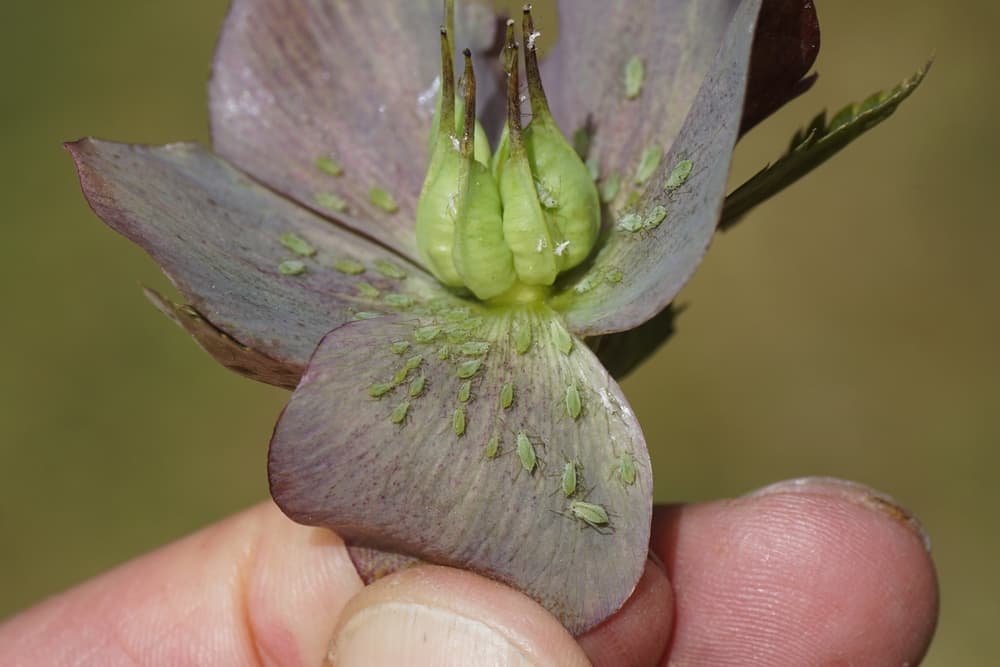
It’s always important to tackle the problem of diseases and insects early on when you first notice symptoms – doing so will enable you to prevent the problem from spreading and allow your plants to flourish.
References
- 1Helleborus. (n.d.). Kew Royal Botanic Gardens. Retrieved March 16, 2023, from https://powo.science.kew.org/taxon/urn:lsid:ipni.org:names:33158-1
- 2Species and distribution – Helleborus. (n.d.). Helleborus Gold Collection. Retrieved March 16, 2023, from https://www.helleborus.de/en/plant-facts/species-and-distribution

